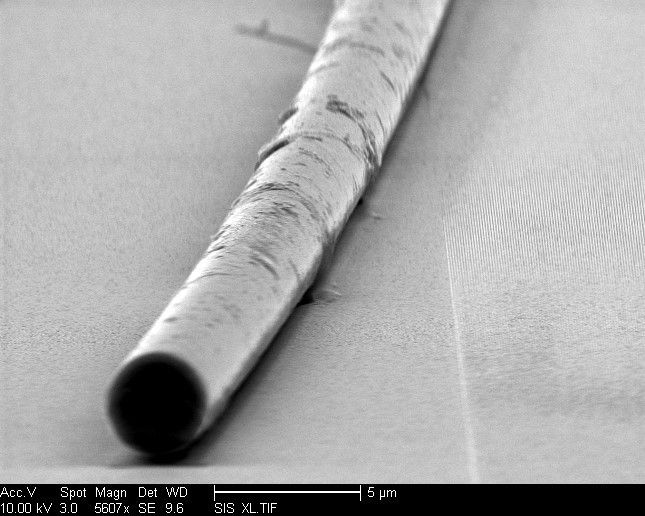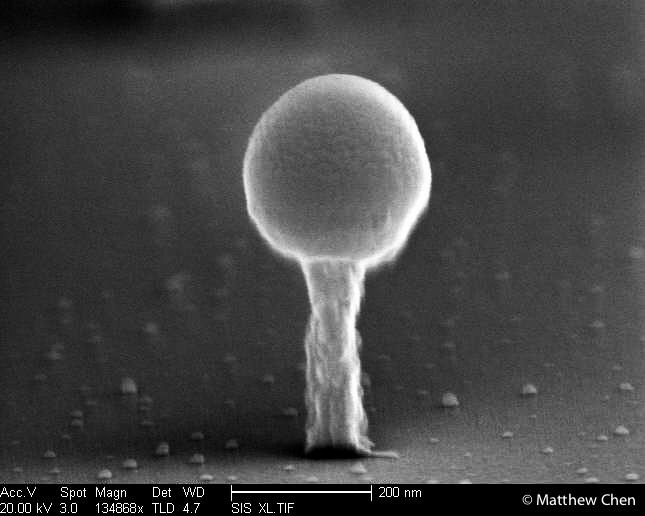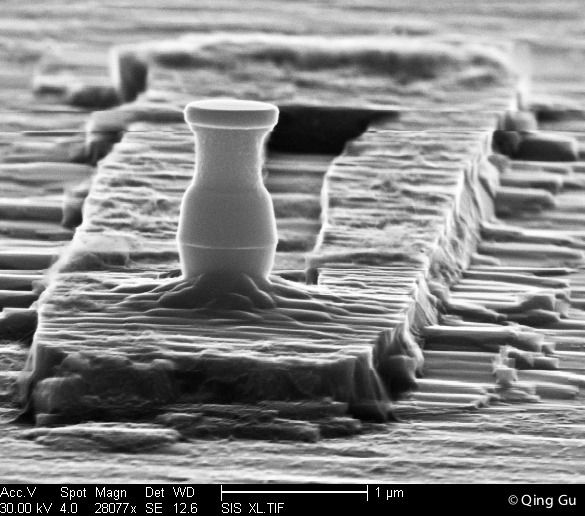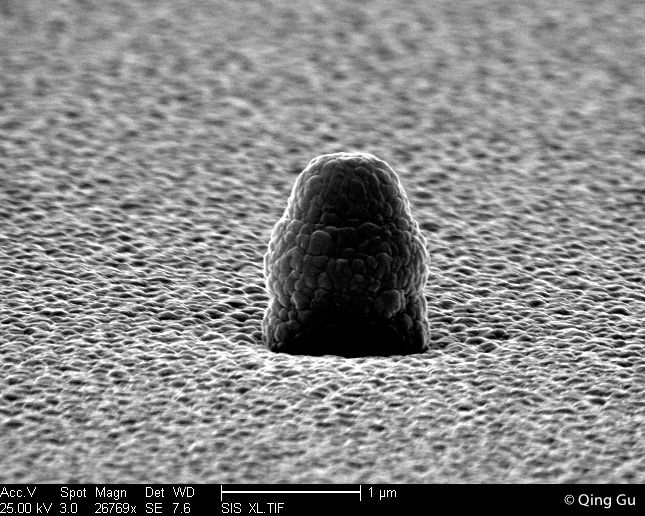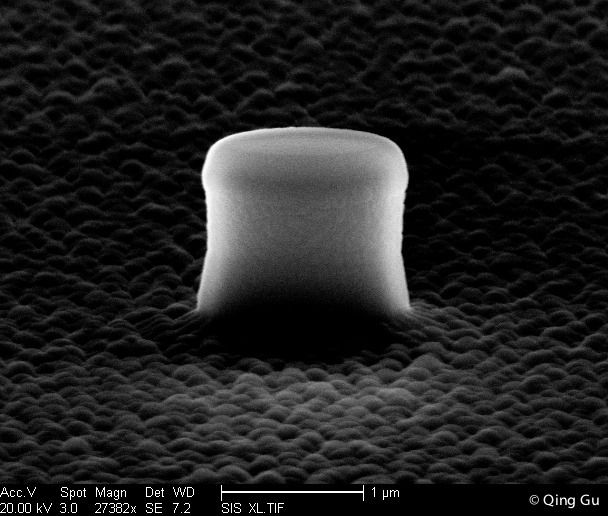Top: An electron microscope photo of long, straight waveguides (left)
interrupted by an accidental scratch during fabrication, that turned the orderly
stripes into naturalistic chaos. Each structure is about 0.5 microns high, or
less than 1/200 the thickness of a typical human hair.
Bottom: A photo on quite


